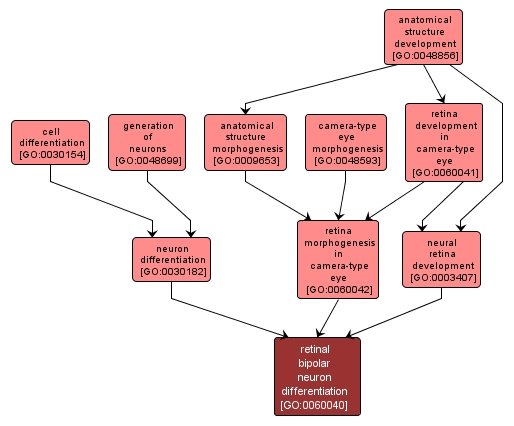GO TERM SUMMARY
|
| Name: |
retinal bipolar neuron differentiation |
| Acc: |
GO:0060040 |
| Aspect: |
Biological Process |
| Desc: |
The process whereby a relatively unspecialized cell acquires specialized features of a bipolar cell, the last neuron to be generated in the retina. |
|

|
INTERACTIVE GO GRAPH
|














